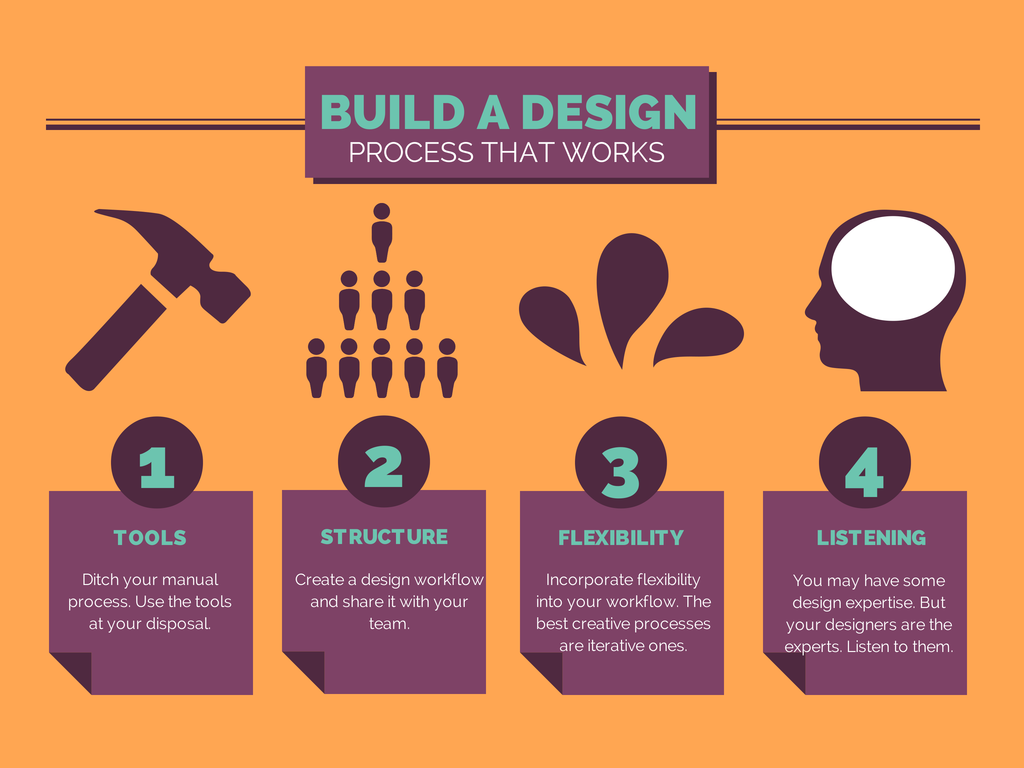
The way your content looks is a big deal. And I mean big.
You could say design is 60,000x more important than text—at least the moment someone lands on your content—because that’s how much faster people’s brains process visual information. Messaging matters, but first impressions live and die by design.
4 Ways to Kick Your Design Process into Shape by @lizkoneill
So go give your designers a hug, because people connect to their work right off the bat. They’re the reason people stick around to actually read your content.
Keeping designers looped into content campaigns is essential for any marketing team. But writers and editors don’t always appreciate how much time, energy, and thought goes into designing content assets.
Too often, content marketing workflows are bottlenecked at the design phase. Expectations aren’t set. Designers are overwhelmed with unforeseen requests. Last minute changes stall progress.
Here are four ways to quell the chaos and kick your design process into shape.
1. Embrace Workflow Tools
Trying to organize your design process manually, whether through emails or Google Docs, isn’t a good idea. There are great tools and marketing platforms at your disposal. Use them.
Trello is our favorite system to organize design requests at Kapost. The collaborative easy-to-use boards allow anyone on the team to submit requests and our designers to manage those requests. Once approved and a deadline is set, we then use our own content marketing software to organize design tasks within the writing, editing, publication, and promotion timeline of the asset or campaign. This ensures everyone stays on the same page about what’s due and when, and tracks comments and revisions in one spot instead of getting lost in long email chains.
2. Be Structured
There’s no one design process that’s going to work for every organization. That said, it’s important to figure out the one that will work for yours.
Identify bottlenecks in your process, work with designers to get an idea of what they need to be efficient and how they like to communicate, and get your stakeholders to be part of the solution. Document a clearly defined structure for how your assets will flow through the design phase, and prep for likely scenarios like changes in design concepts or last-minute edits. Communicate this structure to everyone on your team.
3. Be Flexible
Being flexible is just as important as being structured. In the wild world of content, things change. And fast. Build flexibility into your process and set expectations with your writers, editors, and designers that change may happen. To work in a creative professional world, you must always be iterating. Don’t be afraid of change. Just have a plan for it.
4. Listen
To work in a creative professional world, you must always be iterating. @lizkoneill
While you may think you know all there is to know about design and front-end development, pause a moment to listen to the people who are hired as experts in the field. In the end, designers have a much more intimate knowledge about how long projects will take, how a content asset should read, what will work, and what won’t. Build trust with your designers by giving them yours. Share your design concepts and inspiration early, then let them run with it. Micromanaging the process won’t do anyone any good.
Designers who feel valued will do better work. Keep your team motivated and operating at the highest level level by incorporating these four elements into a system that addresses needs, removes common stumbling blocks, and guides your content seamlessly through launch.
